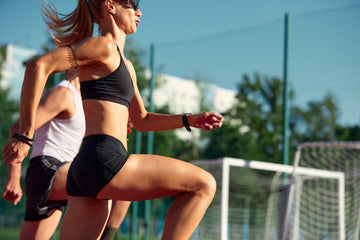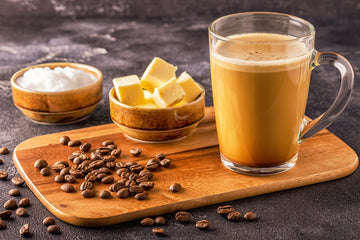Joints play a central role for athletes as they ensure mobility, stability and power transmission. A long-lasting sporting career depends largely on how well the joints are protected and cared for. Through preventive measures and targeted training, athletes can stabilize their joints in the long term and thus prevent injuries. In this article, you will learn which exercises and routines can help you keep your joints healthy and strong.
Why is joint protection so important?
Joints are the connection points between bones and enable movements such as bending, stretching and turning. At the same time, they absorb stress and ensure the stability of the entire body. However, intense sporting activities can place a lot of strain on the joints, which over time can lead to overload, pain or injury. To avoid this, it is important to pay special attention to the joints and take preventive measures.
Tips for strengthening your joints
1. Regular warm-up and mobilization
•A thorough warm-up is crucial to prepare the joints for the upcoming strain. Warming up promotes blood circulation, which provides the joints with better nutrients and makes them more flexible. Mobilization exercises such as circular movements of the arms and hips or light stretches ensure that the joints are moved in all directions and are optimally prepared for the upcoming activity.

2. Stabilization exercises for healthy joints
•Stabilization exercises are important to strengthen and stabilize the joints. This refers to training the muscles that surround the joint in question. Strong muscles relieve the joints as they take on the main load during movement. Exercises such as:
• Planks (forearm support) strengthen the core and stabilize the hip and shoulder joints.
• Standing on one leg or balance exercises train your balance and promote stability in your knees and ankles.
• Side planks strengthen the muscles around the spine and help stabilize the hips and shoulders.
These exercises can easily be integrated into any workout to benefit from better joint health in the long term.
3. Targeted muscle building training
•Building up muscles is one of the most effective ways to protect joints. The stronger the muscles around a joint, the less strain the joint itself has to bear. Strength training should be carried out regularly to strengthen the muscles around the knees, hips, shoulders and spine. Make sure that all muscle groups are put under balanced strain and avoid one-sided exercises to avoid imbalances that can put additional strain on the joints.
4. Correct technique during training and in everyday life
•Incorrect posture or technique during training can place unnecessary strain on the joints and lead to long-term damage. Make sure you perform all exercises in a controlled manner and with the correct posture. This applies not only to strength training, but also to everyday movements such as lifting heavy objects or walking. Good technique minimizes the risk of incorrect strain and helps protect the joints.
5. Avoid overloading
•Overtraining and excessive strain without sufficient recovery phases can cause significant damage to the joints. It is important to regenerate the body sufficiently so that the joints and the surrounding structures can recover. Give your joints regular rest periods and use active regeneration measures such as light stretching or mobility exercises to keep the joints supple.
6. Proper nutrition for healthy joints
•Diet plays an important role in joint health. Particularly important are nutrients such as:
• Omega-3 fatty acids , which are found in fatty fish (salmon, mackerel) and have anti-inflammatory properties.
• Vitamin C supports collagen production, which is important for joint function.
• Calcium and vitamin D are important for bone health and contribute to joint stability.
A balanced diet with sufficient healthy fats, vitamins and minerals can help protect the joints in the long term.
Conclusion
Strengthening the joints is essential for a long and successful sporting career. With a combination of targeted stabilization exercises, strength training, correct technique and a balanced diet, athletes can relieve and protect their joints. Regular care and attention to the joints can prevent injuries and pain, so that nothing stands in the way of an active, sporting life.





